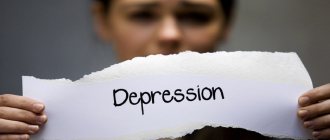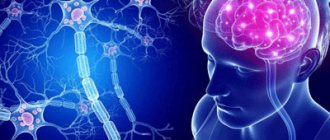The difficulty in treating masked depression lies in its diagnosis. Unfortunately, this form of depression is very difficult to recognize and only a very competent doctor is able to correctly assess a person’s condition.
To diagnose masked depression, you need to look for signs other than signs of sadness and depression.
In this regard, therapy for masked depression is unable to achieve its main goal. Our specialists have extensive experience in clinical and differential diagnosis. It is also worth noting that in our clinic the patient is examined by several specialists and for each a medical consultation is held free of charge. This eliminates the possibility of an erroneous diagnosis.
If a person undergoes a full course of treatment, strictly following all the doctor’s instructions, then he gets rid of masked depression.
It is difficult to help someone who does not admit his illness, someone who will not talk about his state of mind. It is a daunting task to throw a lifeline to those who deny possible help. And yet, we must strive to understand and help those who live with it.
Perhaps you have heard of the mind-body connection? About how the power of the mind can affect the condition of your body?
If you feel depressed, you can feel it in your own body - your body may hurt, your bones may ache, various organs may ache, and your head may be pounding from a migraine.
Brain Clinic specialists treat masked depression using individually adapted methods. The concept of these techniques is an organic synthesis of the principles of restorative medicine, therapy, psychotherapy, neurology and psychiatry. Therefore, we will be able to establish an accurate and complete diagnosis and treat masked depression with maximum effect.
Call
We help in the most severe cases, even if previous treatment did not help!
Signs
A person with subdepression does not experience joy, practically does not smile, and expresses gloomy thoughts.
He often gives the impression of being dissatisfied with everything, condemns others and is critical of them and himself. He withdraws into himself and communicates less often with people. Such people get up early in the morning or want to sleep all the time. They may refuse to eat throughout the day. If you notice this behavior, you should ask the person how he feels. Having received a gloomy or rude statement in response, you need to be even more wary and try to help: listen, encourage, offer to visit a specialist.
Clinical picture and forms of masked depression
There are several variants of such disorders (they are often called “masks”):
- in the form of vegetative, somatization and endocrine disorders;
- in the form of pain syndrome (algia);
- with alienation of somatosensory drives;
- in the form of psychopathological disorders;
- in the form of pathocharacterological disorders.
More often than others, larval depressions occur, accompanied by somatovegetative, dermatological and pain symptoms. They appear:
- dizziness;
- hot flashes (mainly to the face, neck and chest), which may be followed by severe chills;
- excessive sweating;
- shortness of breath, feeling of lack of oxygen;
- changes in eating behavior: lack of appetite, pronounced aversion to food followed by loss of body weight or vice versa, overeating and weight gain;
- skin itching, focal hyperemia, peeling of the skin, possible secondary fungal or bacterial infection;
- menstrual disorders, decreased libido, impotence.
Approximately 2/3 of patients with this disease complain of pain of varying intensity and nature. They differ from algia in somatic diseases in the following ways:
- lack of clear localization; moreover, unpleasant sensations can “migrate” from one part of the body to another;
- the pain does not increase with palpation;
- discomfort appears and disappears spontaneously, for no apparent reason, they are not associated with food intake, any stressful situation, etc.;
The pain is usually not acute; the patient describes it as painful and excruciating. However, a clear circadian rhythm is typical: discomfort increases in the predawn and morning hours, weakens during the day and usually disappears in the evening.
Often masked depression is accompanied by symptoms reminiscent of a panic attack (pseudo-asthmatic variant of the disorder). The attack is characterized by a spontaneous onset, usually in the morning. Breathing becomes shallow, rapid, and shortness of breath occurs. The patient experiences a painful feeling of suffocation, tightness and a coma in the chest. This condition is often accompanied by fear and psychomotor agitation.
Another symptom of masked depression is thermoneurosis - an unreasonable increase in temperature.
Severe symptoms of subclinical depression
It can be difficult to distinguish subclinical depression of an intolerable nature. But close people are able to notice changes in behavior, because before the person was not like that. This should suggest a possible illness. It is worth taking a closer look at other manifestations to be sure that the problem is not in the person himself, but in his condition at the moment.
Symptoms of dysthymia:
- melancholy and boredom;
- fatigue, drowsiness, fatigue;
- conflict, irritability;
- egocentrism;
- emotional instability;
- increased anxiety, fears;
- unreasonable feelings of guilt;
- lethargy, slowness;
- indifference to any activity and one’s life;
- lack of emotions, feelings of intimacy and empathy;
- hypochondria – searching for non-existent diseases, craving for medical examinations;
- hysteria - a tendency to dramatize events;
- unpleasant and unusual bodily sensations without an objective reason for their occurrence.
Among the symptoms, one most often clearly predominates, the rest are insignificantly expressed. This is a characteristic feature of dysthymia. If subdepression has formed against the background of the death of a loved one, an overvalued complex of “cult of the deceased” may arise. The patient constantly talks about him, goes to the cemetery, and reviews things related to him. Sometimes, against the background of dysthymia, phobias develop: cacero-, cardio- and nosophobia. This is due to unusual bodily sensations, the cause of which is not damage to internal organs, but mental processes.
Main causes of masked depression
The etiology of depressive spectrum disorders is associated primarily with hereditary predisposition. Indeed, genetically determined defects in metabolism and serotonin synthesis play a fairly large role in the development and progression of the clinical picture of such a disorder.
But in addition to heredity, the following are of great importance:
- characteristics of a person’s character and personality: as practice shows, people with a hypertrophied sense of responsibility and accustomed to hiding their emotions are predisposed to masked depression;
- principles of education at an early age: excessive demands, comparison with other children (not in favor of the child), punishment for unwillingness to unquestioningly obey the will of the parents, etc.;
- chronic stress, fatigue, nervous tension;
- long-term exhausting physical and emotional stress;
- illness or loss of loved ones;
- accident and other traumatic situations.
Kinds
Subdepressions are distinguished by the nature of their course and manifestations. The treatment regimen and duration depend on the type.
Types of dysthymia:
- Residual – chronic subdepression with episodes of incomplete remissions. Usually occurs due to insufficient treatment of major depression.
- Post-adaptation – with a predominance of neurotic symptoms: emotional instability, guilt, anxiety, etc. Often formed when reactive depression is insufficiently treated.
- Senile – subdepression of older age with symptoms characteristic of organic brain damage.
- Endoreactive – formed due to a traumatic event. The interweaving of classic depressive and reactive manifestations is characteristic.
- Somatized or cathesthetic – occurs more often than other types. Somatic complaints predominate - shortness of breath, poor sleep, constipation, palpitations, tearfulness, dizziness, tachycardia, tremors of the limbs, increased sweating. It manifests itself as depression and anxiety about one’s health. If left untreated, a burning sensation in the intestines and larynx and pain in the epigastrium may occur.
- Characterological – a tendency to the blues, pessimism, gloominess, pickiness accompany such patients throughout most of their lives. Against this background, dissatisfaction with oneself and one’s life arises, as well as increased sensitivity to criticism and other people’s opinions. Complaints about the condition are clearly exaggerated - symptoms of hypochondria and hysteria.
A patient with each type of subdepression is treated according to an individual regimen. Sometimes it is possible to recover from the condition without medication support, and some patients require lifelong medication.
Causes
The reasons for the development of masked depression are not fully understood. Most often, the etiology lies in heredity - genetic predisposition. The disease is caused by physiological and biological factors. One of them is a deficiency of neurotransmitters, biologically active substances (amino acids, peptides, monoamines) involved in the transmission of nerve impulses and affecting the state of the emotional background.
The factors that reduce the levels of dopamine, serotonin and norepinephrine - the so-called hormones of happiness, pleasure, good mood and vigor - have not yet been studied. The risk group is considered to be people with genetic pathologies of metabolism, vascular diseases of the brain, and chronic autoimmune diseases.
These mechanisms embedded in genes are triggered in various life situations:
- the emergence of an obstacle to achieving a set goal, which seems insurmountable, and giving up the goal is impossible;
- family conflicts for any reason: misunderstanding, violence, financial or housing instability, pressure from family members;
- intense work process;
- dysfunctional relationships in the team or with managers;
- stress due to unexpected events - moving, dismissal, unwanted pregnancy.
That is why it is so important to talk about all the significant life circumstances of recent years at an appointment with a psychotherapist. During this conversation, trends and symptoms of latent depression will be noticeable, which will be decisive for making the correct diagnosis and prescribing appropriate therapy.
Diagnostics
To diagnose dysthymia, an examination by a psychotherapist-psychiatrist is necessary. Classic tests for depression in the form of questionnaires in this case may show dubious results, while the person will actually need help. If there are somatic manifestations - headaches, tachycardia, abdominal discomfort and other symptoms, it is necessary to undergo examination by specialized specialists. It is likely that there really is a problem, which does not negate the possibility of the parallel presence of subdepression. It is recommended to exclude somatic causes of symptoms similar to dysthymia. To do this, you need to take a blood test for several indicators.
Exploratory survey:
- determination of the level of free T3 and T4, TSH, anti-TPO (antibodies to thyroid peroxidase);
- concentration of vitamin D in the blood;
- ferritin, serum iron;
- general blood analysis;
- determination of the concentration of sex hormones.
If no deviations are found, you should definitely contact a psychotherapist.
How to treat hidden depression
It has been proven that the pathogenetic basis of depression is a disturbance in the metabolism of serotonin, dopamine and norepinephrine, therefore an individually selected antidepressant in an adequate dosage is the basic therapy for latent depression, which can be superimposed on psychotherapy: cognitive, behavioral (behavioral), psychodynamic, etc.
Competent psychotherapy changes the way of thinking in a positive direction, helps to identify true psychotrauma, and removes negative behavioral symptoms such as avoidance of entertainment, a monotonous lifestyle, and the desire for excessive solitude.
Signs, manifestations, symptoms of depression
Signs of the disease can be divided into four groups.
- emotional disturbances: decreased mood, lack of ability to worry,
- disturbances of mental functions: slowing down of the pace of thinking, impaired attention,
- a feeling of insignificance, uselessness, ideas of self-blame, gloomy and negative thoughts about the meaninglessness of life, a pessimistic interpretation of the past, present and future, which can lead to suicidal attempts;
- decreased motor activity and behavioral disturbances: decreased performance, passivity, refusal to communicate, reclusiveness;
- physiological manifestations: eating disorders (usually loss of appetite), intestinal dysfunction, constipation, loss of libido;
The interaction between depression and somatic disorders can be viewed from different perspectives
- Depression can manifest itself in the form of somatic disorders.
- Depression can be a consequence of a serious medical illness, such as cancer or stroke.
- Depression and physical illness can coexist (for example, with HIV infection, with gastritis).
- Depression can develop as a result of certain hormonal diseases, such as hypothyroidism, menopause, Cushing's syndrome.
- Depression may develop while taking certain medications (for example, certain hormonal medications).
The abundance of complaints, their unusual combination, which is not entirely typical for the clinical picture of any somatic disease, suggests masked (hidden, larved, somatized) depression.
Netrusova Svetlana Grigorievna – candidate of medical sciences, associate professor, psychiatrist of the highest category, psychotherapist. You can watch other videos on this topic on our YouTube channel.
In this case, somatic symptoms can come to the fore, overlapping the severity of affective depressive disorders. The clinical picture is dominated by vegetative and somatic symptoms, which makes diagnosis very difficult, especially since the characteristic depressive symptoms are weakly expressed, erased or completely absent.
These patients are fixated on their experiences and usually do not talk about the symptoms of depression that they have, considering them secondary and insignificant. Moreover, often the doctor’s questions about his mood, problems, and lifestyle are perceived extremely negatively, causing aggression and irritation. Therefore, it is difficult for a non-psychiatrist to diagnose such depression unless he pushes aside, like a curtain, the somatic complaints presented by the patient, and tries to look inside the problem with which the patient came, and also looks at it from the other side. You should pay attention to the “body language” characteristic of depressed patients. Such people stop paying attention to their appearance, dress carelessly and dullly, mainly in clothes of dark colors. These features are more noticeable in women - they do not use cosmetics and jewelry, and neglect their hair. With depression (except for agitated depression), a person’s speech and movements slow down, answers become monosyllabic, and facial expression becomes expressionless.
But if the doctor can remove the mask hidden by somatic symptoms of depression , then he will see a depressed mood, a pessimistic assessment of the past, present and future, a reduced desire to perform usual work, a loss or decrease in interests and the ability to experience pleasure in activities or events usually associated with positive emotions, decreased activity, increased fatigue and decreased energy. And these symptoms, upon careful analysis, arose on the eve of the problems with which the patient came to see a somatic doctor (not a psychiatrist).
Treatment of depression
According to the results of psychological research, some factors have become known that help prevent the onset of depression.
The first thing you need to learn to do is think positively, look for the positive sides in any situation. An important point is also the way of communication in the family. Learn to be friendly, do not provoke conflict situations, do not judge. Try to establish trusting and warm contacts so that those around you will provide you with a “shoulder of support” in the future.
In the treatment process, hospitalization of the patient is not always a necessary factor; on the contrary, treatment that is carried out in a familiar environment for the patient, with the support of relatives and friends, is more effective.
Treatment is carried out in three directions: social therapy, pharmacotherapy and psychotherapy.
It is important for treatment to choose a highly professional doctor whom you will completely trust. You need to strictly adhere to the therapy plan, come to see the doctor at the specified time, and talk in detail about your sensations and feelings.
The surrounding society is a very important component, but you need to set boundaries so as not to plunge others into depression. You should not criticize patients and explain your position in an intrusive manner. Communication should be soft, the patient’s activities should be smoothly organized. One wrong word or action can worsen the course of a depressive state.
Pharmacotherapy for depression
Regardless of the type of depression and its manifestations, depressive symptoms respond well to treatment with antidepressants. They should only be prescribed by a doctor; self-prescribing and taking medications can aggravate the problem. For each patient, a specific antidepressant and individual dosage are determined.
You need to know that antidepressants begin to produce results only after three weeks. Therefore, counting on an earlier effect is simply not realistic. Sometimes, with severe and prolonged depression, it is necessary to prescribe two antidepressants from different groups simultaneously. After the symptoms of depression have completely disappeared, treatment with antidepressants should be continued for another four to six months, and in some cases, the period of taking the drugs can reach up to one year in order to prevent a relapse.
But if we are talking about chronic depression, when there are repeated attacks, it is necessary to prescribe mood stabilizers after getting out of a depressive state. These are special medications that reduce the risk of recurrent depression.
In cases of increased anxiety and sleep disturbances, sedatives and hypnotics are prescribed, which begin to work from the first doses - they improve sleep and relieve anxiety.









